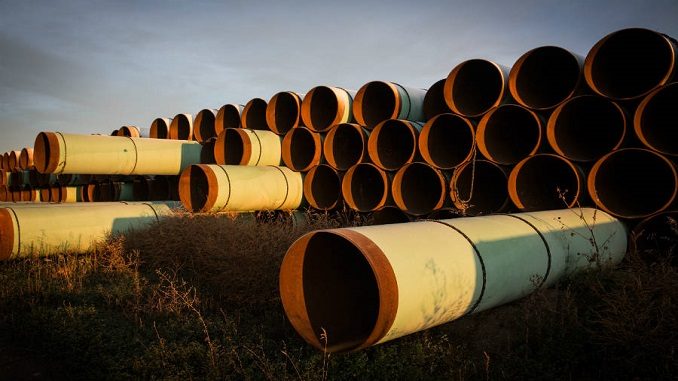
Nebraska officials approved the Keystone XL pipeline, removing its last major regulatory obstacle, The Wall Street Journal writes. The Nebraska Public Service Commission in a 3-2 vote approved Keystone XL’s route through the state, which would extend and expand the company’s Keystone pipeline network to carry oil 1,700 miles from Alberta in Canada to Steele City, Nebraska. Opposition from landowners and others in Nebraska helped animate a national protest movement that effectively stalled the pipeline for years, The Journal adds.
TransCanada Corp. first proposed the project in 2008, and President Donald Trump revived Keystone XL in March, reversing an Obama administration federal directive to block its construction. However, the pipeline is still subject to approval from Nebraska state regulators.
Although TransCanada didn’t commit to the project yet, the company said a final decision on whether to move ahead with the pipeline could come as early as next month.
“As a result of today’s decision, we will conduct a careful review of the Public Service Commission’s ruling while assessing how the decision would impact the cost and schedule of the project,” Russ Girling, TransCanada’s president and chief executive, said in a statement.
The route approved by the public service commission wasn’t the one preferred by TransCanada, as its preference was for a path through the state’s Sandhills region, which sits atop one of the largest freshwater aquifers in the U.S. That was the route that sparked the protests, and TransCanada proposed another route that avoids the Sandhills, the one approved by the commission, The Journal adds.
The news outlet adds that other questions still linger over Keystone XL—including whether sufficient demand exists for it. TransCanada had struggled to line up customers earlier this year to ship crude oil from Canada’s oil sands to its eventual destination beyond Nebraska, the U.S. Gulf Coast, according to people familiar with the matter.
The company said it is targeting commitments from customers to ship around 500,000 barrels a day on the pipeline over the course of a 20-year contract, but it hasn’t specified any customers it has signed up during its open season, which began in October, The Journal writes.

Be the first to comment